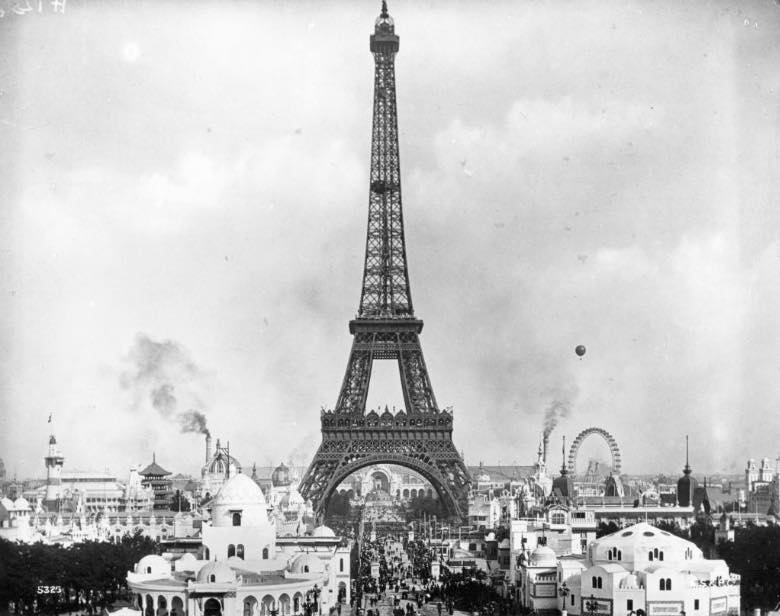What if the art history books are (partly) wrong and need to be rewritten? What if Impressionism was not—or not only—an inspiring movement that sought to break with everything that had gone before, but was, at least in part, a reflection of the atmospheric pollution of the time resulting from the Industrial Revolution?
Ernst H. Gombrich, one of the most renowned art historians and perhaps best known thanks to his book, The Story of Art, which has become a reference in the dissemination of this discipline, explains that Impressionism was a pictorial revolution that emerged in France in the 19th century at the hands of Monet, Manet and their followers. According to the author, this movement was based on the rejection of traditional realist painting because it did not represent the world as it is perceived in the open air but was limited to reflecting in detail the preconceived idea of how things should be, often through artificial scenes carefully recreated in the artist’s studio. In contrast, the Impressionist painters advocated capturing the essence of the moment rather than faithfully representing objects, the general appearance rather than particular details.

However, the question arises as to whether Impressionism in fact contained a lot of realism that faithfully reflected the growing pollution of the time, a consequence of the inexorable Industrial Revolution of the 19th century. This is the revolutionary theory postulated by a recently published study of the stylistic evolution of two of Impressionism’s main protagonists over time: the aforementioned Claude Monet and the British artist Joseph Mallord William Turner, considered by many experts to be the movement’s precursor and the inspiration for the French Impressionists.
The authors of the study quantified the contrast, colours and sharpness (or definition) of 60 works by Turner and 38 by Monet and compared them with the changes in the estimated concentration of sulphur dioxide—the main atmospheric aerosol of industrial origin—during the 19th century in both London and Paris. In both cases, they found that the pictorial development of both artists, marked by an increasingly Impressionist influence, coincided with the progressive increase in air pollution.
Brainteaser 1: Forerunner J. M. W. Turner was ahead of the times
Turner’s work is an example of this shift towards Impressionism and, at the same time, the change in the air quality of the places in which he painted.
After all, Impressionism is characterised by less contrast between colours, a predominantly off-white atmosphere, a tendency towards more muted, almost pastel tones, and increasingly less defined figures and forms. All of these characteristics illustrate how the world looks on a foggy or hazy day… or in an atmosphere with a high concentration of aerosols, such as those emitted by factory chimneys due to the incomplete combustion of coal.
Brainteaser 2: Claude Monet reinterpreted with the perspective of time
Monet’s work is a manifestation of the variations in air quality at different times of day, as well as a demonstration of the evolution of Impressionism itself.
Aerosols are small particles that, because of their size, remain suspended in the atmosphere for a long time, where they absorb and scatter some of the solar radiation that hits and/or is reflected by various objects. Their elevated presence, therefore, affects the way we see objects: with less contrast and sharpness, with fainter colours and enveloped in a milky or whitish atmosphere. This would explain why canvases painted by artists in an aerosol-laden environment, such as that of the major European cities of the time, reflect these characteristics. They were realistically depicting the world as they perceived it.
If confirmed, this theory would explain why Turner is considered a precursor of the French movement, given that the Industrial Revolution began in Great Britain and spread from there to the rest of the major cities of Western Europe; British painters would have been the first to suffer the light and environmental consequences of such pollution. In fact, it is estimated that the air pollution in Paris around 1870, when the Impressionist movement emerged, was equivalent to that of London in the first quarter of the century, when the work of Turner began evolving.
It would also explain the abrupt transition that can be seen in Monet’s work when looking at his London series, that is, the pictures he painted during his stays in the English capital, by then known as the “Big Smoke” or the “Big Fog”.
Brainteaser 3: From London to France and Back
Even more difficult. The task now is to put in chronological order the following works by the French artist Monet, two painted in London and two in France, taking into account the different air quality in the two countries.
Another of the defining characteristics of Impressionism is the preponderance of blue tones, something that could be explained by alluding to atmospheric pollution and its effect on incident radiation. In this respect, a study published in 2021 established a relationship between the ability to perceive blue—and the different shades of blue—and incident solar radiation, such that those who live in places where sunlight is less intense and more diffused due to the effect of clouds and fog—or aerosols—have an easier time appreciating and distinguishing them.
Brainteaser 4: J. M. W. Turner on the Road
The impact of light is also reflected in Turner’s work. His travels through different parts of Europe can be seen in his paintings, which also reflect the progressive advance of the Industrial Revolution.
Miguel Barral
Comments on this publication